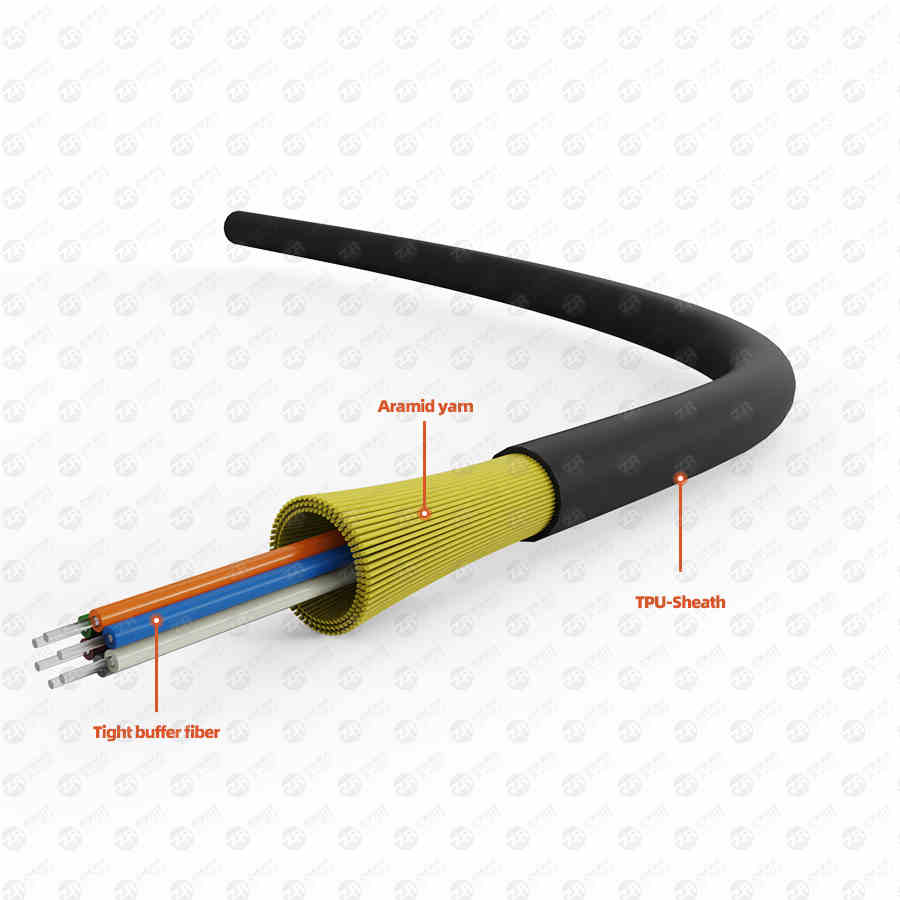
12
2022-10
2022-10
Maintenance and Construction of Optical Cable Lines
This paper introduces the causes and treatment methods of large attenuation points of optical cable lines, line maintenance and testing methods, and standardized operation procedures for construction and connection of optical cable lines. It also briefly introduces the composition and structure of the optical cable, the naming method and the standard chromatographic arrangement of the optical fiber. very powerful!

12
2022-10
2022-10
Manufacture and selection method of optical cable
1. Manufacture of optical cable: The manufacturing process of optical cable is generally divided into the following processes: 1) Screening of optical fibers: select optical fibers with excellent transmission characteristics and qualified tension. 2) Dyeing of optical fibers: use standard full chromatogram to identify, requiring high temperature not fading and not migrating. 3) Secondary extrusion: Use plastic with high elastic modulus and low linear expansion coefficient to extrude into a certain size tube, incorporate the optical fiber and fill it with moisture-proof and waterproof gel, and store it for a few days (not less than two days) . 4) Optical fiber cable twisting: twist several extruded optical fibers and strengthening units together. 5) Squeeze the outer sheath of the optical cable: add a layer of sheath to the twisted optical cable.

11
2022-10
2022-10
The difference between optical fiber quick connector and cold connector
The continuous updating of several optical communication technologies has driven the large-scale development of fiber-to-the-home, thereby promoting the continuous expansion of the market scale of fiber-optic quick connectors. In the process of fiber-optic wiring, there are generally two types of fiber-optic connection methods. One is It is optical fiber thermal fusion, and one is to use a quick connector for splicing. So, what is the difference between fiber optic quick connectors and cold splices?

09
2022-10
2022-10
What are the main features of FTTH cable
Main types and technical requirements Metal wedge fittings Metal wedge fittings consist of a metal housing, a metal wedge slider and a pull cord. Since the figure 8 cable (F8) is mainly used as a load-bearing suspension wire, it can be clamped with a metal wedge fitting. Its technical requirements are mainly:

09
2022-10
2022-10
ADSS includes not only aramid reinforced all-dielectric fiber optic cables
Self-supporting non-electric overhead fiber optic cable accessories wedge wedge accessories Self-supporting feeder-free aerial optical cables, commonly referred to as optical cables used by major telecom operators. Non-power overhead optical cable accessories are not unavailable in the electrical field, but are different from power overhead optical cable accessories in terms of cost and electromagnetic field sensing.

09
2022-10
2022-10
Self-supporting power overhead optical cable fittings
Aerial optical cables used in power systems are mainly three-dimensional self-supporting optical cables (ADSS), optical composite overhead ground wires (OPGW) and optical composite composite phases (OPPC). The reason why the power cable and the communication cable are separated is that the power cable is unique and independent, especially the use environment has a strong inductive power supply, which is difficult to carry out construction and maintenance. While more and more telecom operators are using power towers to build ADSS, they still need to comply with structural codes for power cables.

08
2022-10
2022-10
Optical fiber continuation loss and solutions
The transmission loss characteristics of optical fibers are the first of the most critical factors in determining the optical data transmission distance, transmission reliability and reliability. There are various reasons for the loss of optical fiber transmission of laser cutting machine. In the basic construction and maintenance of optical fiber communication Internet, the most important concern is the reason of transmission loss caused by optical fiber application and how to reduce this loss.

08
2022-10
2022-10
Optical fiber continuation loss and solutions
The transmission loss characteristics of optical fibers are the first of the most critical factors in determining the optical data transmission distance, transmission reliability and reliability. There are various reasons for the loss of optical fiber transmission of laser cutting machine. In the basic construction and maintenance of optical fiber communication Internet, the most important concern is the reason of transmission loss caused by optical fiber application and how to reduce this loss.

08
2022-10
2022-10
Discontinuous Losses Caused in Optical Fiber Applications and Solutions
Discontinuous wear and tear and solutions The key to discontinuous loss in optical fiber applications is bending loss and loss caused by other engineering construction elements and application scenarios.

30
2022-09
2022-09
FTTH engineering construction specifications and requirements
This article mainly introduces the matters needing attention in FTTH optical cable laying and related equipment installation requirements. 1. Optical cable routing Routing retest should be carried out before laying optical cables. The routing and laying method shall be based on the construction drawing design. Necessary routing changes can be proposed by supervisors and construction personnel, and confirmed with the consent of the construction unit; for large routing changes over 500m, the design unit should go to the site to negotiate with the supervisor and the construction unit, and the construction unit approves and fills in the "Engineering Design Change Form".

Message
Copyright © 2021 DUCTCABLE.COM Inc. All Rights Reserved.
